Mysterious Lost Kingdom Of Urartu And Its Enigmatic History
A. Sutherland - AncientPages.com - The lost kingdom of Urartu is shrouded in mystery because very little is known about this ancient place and the origin of its people.
The capital of Urartu was the rock fortess Tushpa. Credit: Adobe Stock - Koraysa
Still today, archaeologists look for more traces of the mysteriously lost kingdom of Urartu, as the Assyrians called it. The Hebrews referred to it as Ararat, and in more modern times, it has been named the Kingdom of Van.
The kingdom's beginnings are lost in the mists of pre-history. Still, Urartu was situated near Lake Van and the mountainous plateau between Anatolia, Mesopotamia, the Iranian Plateau, and the Caucasus Mountains before it was destroyed. The earliest documents mention the land of Urartu can be found in Assyrian sources. This Iron Age kingdom was established around the mid-ninth century BC and conquered by the ancient Iranian people of Medes in the early 6th century BC.
Based on what we know, the people of Urartu were famous metalworkers and spoke a language related to Hurrian (a language with no other known connections). They adapted the Assyrian cuneiform script for their purposes.
Although it cannot be said with certainty, Urartu was ruled by a single dynasty from the ninth century, expanding three kingdoms to the south when Assyria was weak.
Two of the Urartian gods holding an unknown object. The plates were decorations for other items and were found at Rusahinili, an ancient Urartian fortress in Turkey. Credit: Credit: Dosseman - CC BY-SA 4.0
The true origin of the people of Urartu has yet to be discovered. Some historians think these people migrated from somewhere to the west into the Armenian plateau, then, for the most part, known as Nairi. They called themselves Khaldians or children of the god Khaldis, just as the name of the Assyrians reflects the name of their god Assur.
In 1939, Professor Shestokov, a Soviet Russian historian, wrote that the oldest states of the Soviet Union were founded 3,000 years ago to the south of Transcaucasia. The oldest among them was called Urartu. Its kings ruled over Georgian tribes.
In 1827, German scholar Friedrich Eduard Schulz first attempted to study the ancient ruins. Schulz made copies of several inscriptions and had these sent back to Paris.
Unfortunately, Schulz and his party were attacked by bandits in Kurdistan and killed in 1829.
The copies were not published until 1840 in Paris, where there were shown to be various inscriptions in Ancient Persian and Assyrian cuneiform, itself not fully translated, while the rest of the inscriptions were in an unknown language.
Left: Bronze figurine of the winged goddess Tushpuea, with suspension hook. Credit: Evgeny Genkin - CC BY 2.5 Right: Bell inscribed with the Urartian royal name Argishti, 786–756 b.c. Credit: Zunkir - CC BY-SA 4.0
In 1847 and 1850, new copies were taken of the inscriptions. Several attempts have been made to decipher the cuneiform inscriptions of Armenia through the present-day Armenian language.
The failure of these attempts has led some to believe that the inscriptions must be in some unknown, alien tongue, neither Indo-European nor Semitic.
Sooner or later, everything must end, and so the existence of the Kingdom of Urartu. The fall of the Kingdom of Urartu is shrouded in darkness. The kingdom succumbed in around 585 - 590 BCE. However, there is no written account of this event, and this timescale is not undisputed.
Archaeologist Boris Piotrovsky, who headed the excavation of Teishebaini, now Karmir Blur in modern Armenia, discovered remains of a city besieged and consumed in a great conflagration during a final night attack. He also uncovered several treasures and everyday artifacts taken to the citadel when the town was attacked.
Reconstruction of an Urartian tripod stand used for burning incense and for illumination decorated with lions made of ivory, 8th century BC, from Altintepe, Museum of Anatolian Civilizations, Ankara. Credit: Carole Raddato - CC BY-SA 2.0
The people of Urartu knew their kingdom was about to vanish and made a last attempt to hide some precious objects, hoping they would survive as a reminder of the kingdom's existence.
Unfortunately, many artifacts, including most inscribed objects, have not been excavated. Only a few (such as the cemetery at Altintepe) have been properly excavated.
It means that archaeologists have been deprived of complete and contextual knowledge of the culture, and precious history has been lost again.
For example, many Urartian cemeteries with hundreds of burial goods have been robbed.
This brilliant era of Urartu did not last long, and the kingdom disappeared rapidly from history.
Updated on July 14, 2023.
Written by – A. Sutherland AncientPages.com Staff Writer
Copyright © AncientPages.com All rights reserved. This material may not be published, broadcast, rewritten or redistributed in whole or part without the express written permission of AncientPages.com
Expand for references
References:
Armen Asher, Teryl M. Asher, The Peoples of Ararat
Lardinois R. Scholars and Prophets: Sociology of India from France in the 19th-20th Centuries
More From Ancient Pages
-
 Modern Humans Inherited DNA From A Mysterious And Unidentified Ancestor
DNA | Aug 7, 2020
Modern Humans Inherited DNA From A Mysterious And Unidentified Ancestor
DNA | Aug 7, 2020 -
 Amazing Giant Rock Engravings Discovered In South America May Be The World’s Largest
Archaeology | Jun 5, 2024
Amazing Giant Rock Engravings Discovered In South America May Be The World’s Largest
Archaeology | Jun 5, 2024 -
 Leshy: Master Of Forest And Wildlife In Slavic Beliefs
Featured Stories | Mar 25, 2016
Leshy: Master Of Forest And Wildlife In Slavic Beliefs
Featured Stories | Mar 25, 2016 -
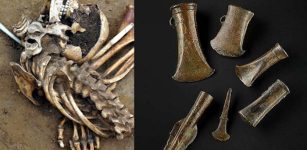 DNA Study Sheds New Light On Ancient Britain’s Language, Ancestry, Kinship, Milk
Archaeology | Dec 26, 2021
DNA Study Sheds New Light On Ancient Britain’s Language, Ancestry, Kinship, Milk
Archaeology | Dec 26, 2021 -
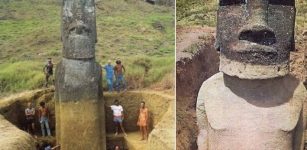 Easter Island’s Statues Reveal Bodies Covered With Unknown Ancient Petroglyphs
Archaeology | Jan 21, 2014
Easter Island’s Statues Reveal Bodies Covered With Unknown Ancient Petroglyphs
Archaeology | Jan 21, 2014 -
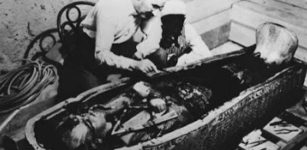 Howard Carter Stole Tutankhamun’s Treasures – Previously Unpublished Letter Reveals
Archaeology | Aug 15, 2022
Howard Carter Stole Tutankhamun’s Treasures – Previously Unpublished Letter Reveals
Archaeology | Aug 15, 2022 -
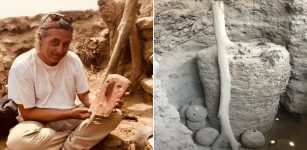 A 1,000-Year-Old Intact Mummy Unearthed In Ancient Pachacamac Site, Peru
Archaeology | May 31, 2018
A 1,000-Year-Old Intact Mummy Unearthed In Ancient Pachacamac Site, Peru
Archaeology | May 31, 2018 -
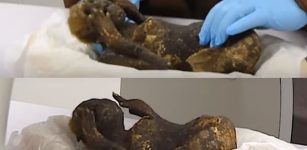 Mysterious Mermaid Mummy Investigated By Scientists
News | Feb 22, 2022
Mysterious Mermaid Mummy Investigated By Scientists
News | Feb 22, 2022 -
 What Is The Codex Sinaiticus And What Does It Mean?
Ancient History Facts | Feb 5, 2019
What Is The Codex Sinaiticus And What Does It Mean?
Ancient History Facts | Feb 5, 2019 -
 Strange And Scary Encounter With Ancient Giants In North America
Featured Stories | Sep 23, 2021
Strange And Scary Encounter With Ancient Giants In North America
Featured Stories | Sep 23, 2021 -
 Mysterious Scottish Stone Circles On Orkney Were Used To Something Very Different Than Previously Thought
Archaeology | Sep 24, 2017
Mysterious Scottish Stone Circles On Orkney Were Used To Something Very Different Than Previously Thought
Archaeology | Sep 24, 2017 -
 Myth Of The Pale Sun Followed By A Catastrophe Confirmed By Archaeologists
Featured Stories | Sep 22, 2024
Myth Of The Pale Sun Followed By A Catastrophe Confirmed By Archaeologists
Featured Stories | Sep 22, 2024 -
 The Opening Of Pandora’s Box May Have Been A Real Event
Myths & Legends | Jun 22, 2021
The Opening Of Pandora’s Box May Have Been A Real Event
Myths & Legends | Jun 22, 2021 -
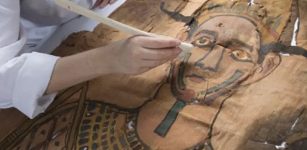 Remarkable Discovery: 2,000-Year-Old Mummy Shroud Found In Museum Collection
Archaeology | Mar 10, 2017
Remarkable Discovery: 2,000-Year-Old Mummy Shroud Found In Museum Collection
Archaeology | Mar 10, 2017 -
 Vegvisir – Old, Sacred Norse Symbol Of Protection And Guidance
Ancient Symbols | May 23, 2020
Vegvisir – Old, Sacred Norse Symbol Of Protection And Guidance
Ancient Symbols | May 23, 2020 -
 Discovery Of Second Viking Site Point Rosee In North America Could Re-Write Ancient History
Archaeology | Apr 1, 2016
Discovery Of Second Viking Site Point Rosee In North America Could Re-Write Ancient History
Archaeology | Apr 1, 2016 -
 Halicarnassus’ Monumental Tomb Built With Shining Stones Belonged To Carian Ruler Mausolus
Featured Stories | Jul 20, 2016
Halicarnassus’ Monumental Tomb Built With Shining Stones Belonged To Carian Ruler Mausolus
Featured Stories | Jul 20, 2016 -
 Mysterious Sumerian Star Tablet And Strange Divine Omens – Sacred Knowledge Of The Gods – Part 1
Featured Stories | Feb 14, 2021
Mysterious Sumerian Star Tablet And Strange Divine Omens – Sacred Knowledge Of The Gods – Part 1
Featured Stories | Feb 14, 2021 -
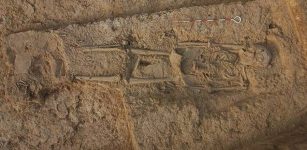 Early Harappan Burial Site With 26 Graves Unearthed In Kutch, Western India
Archaeology | Mar 14, 2019
Early Harappan Burial Site With 26 Graves Unearthed In Kutch, Western India
Archaeology | Mar 14, 2019 -
 Fascinating Discovery Of An Inhabited Underground World In Medieval Wales
Featured Stories | Mar 2, 2024
Fascinating Discovery Of An Inhabited Underground World In Medieval Wales
Featured Stories | Mar 2, 2024




